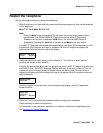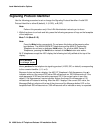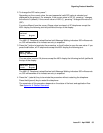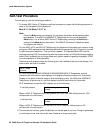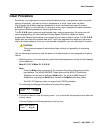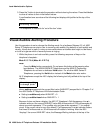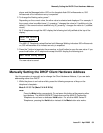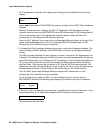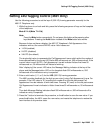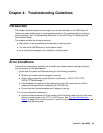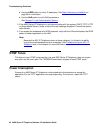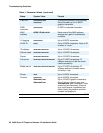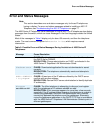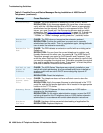
Setting L2Q Tagging Control (4601 Only)
Issue 2.2 April 2005 61
Setting L2Q Tagging Control (4601 Only)
Use the following procedure to set the layer 2 (802.1Q) framing parameter manually for the
4601 IP Telephone only.
1. While the phone is on-hook and idle, press the following sequence of keys on the faceplate
of the telephone:
Mute 8 2 4 # (Mute T A G #)
Note:
Note: Press the Mute button momentarily. Do not press this button while pressing other
keys/buttons. Pressing the Hold button instead of the Mute button also works.
Because it does not have a display, the 4601 IP Telephone’s Call Appearance Line
indicators wink out the current NVL2Q value. Valid values are:
● 1=ON (enabled)
● 2=OFF (disabled)
● 3-AUTO (the default)
The single-digit value is represented by Call Appearance Line a, which winks the number of
times represented by the current L2Q value 600 milliseconds on, 200 milliseconds off. If the
current value is zero (AUTO), Call Appearance Line a’s indicator flutters five times 50
milliseconds on, 50 milliseconds off instead of winking.
After “displaying” the current L2Q value, the Message Waiting indicator at the top of the
phone and the Message button LED on the faceplate flash 500 milliseconds on, 500
milliseconds off to indicate an entry is expected.
2. Enter a valid value (1, 2, or 0) for the L2Q (802.1Q) framing parameter.
The 4601 provides feedback for the digit as you enter it using Call Appearance Line a. For
example, if the L2Q value is “2,” pressing the number 2 on the dial pad causes Call
Appearance Line a’s indicator to wink two times. Pressing “0” (zero) on the dial pad causes
Call Appearance Line a’s indicator to flutter three times 50 milliseconds on, 50 milliseconds
off.
Then both Message Waiting indicators flash 500 milliseconds on, 500 milliseconds off to
indicate an entry is expected.
3. Press the * button to terminate the procedure, or the # button to save the new value. If you
press the # button, the 4601 saves the new value, and resets the telephone to restore the
user interface to its previous state.



